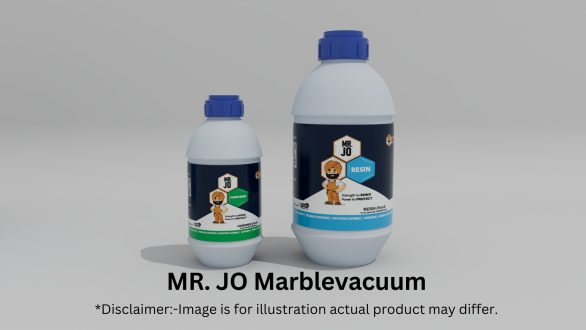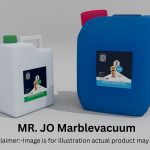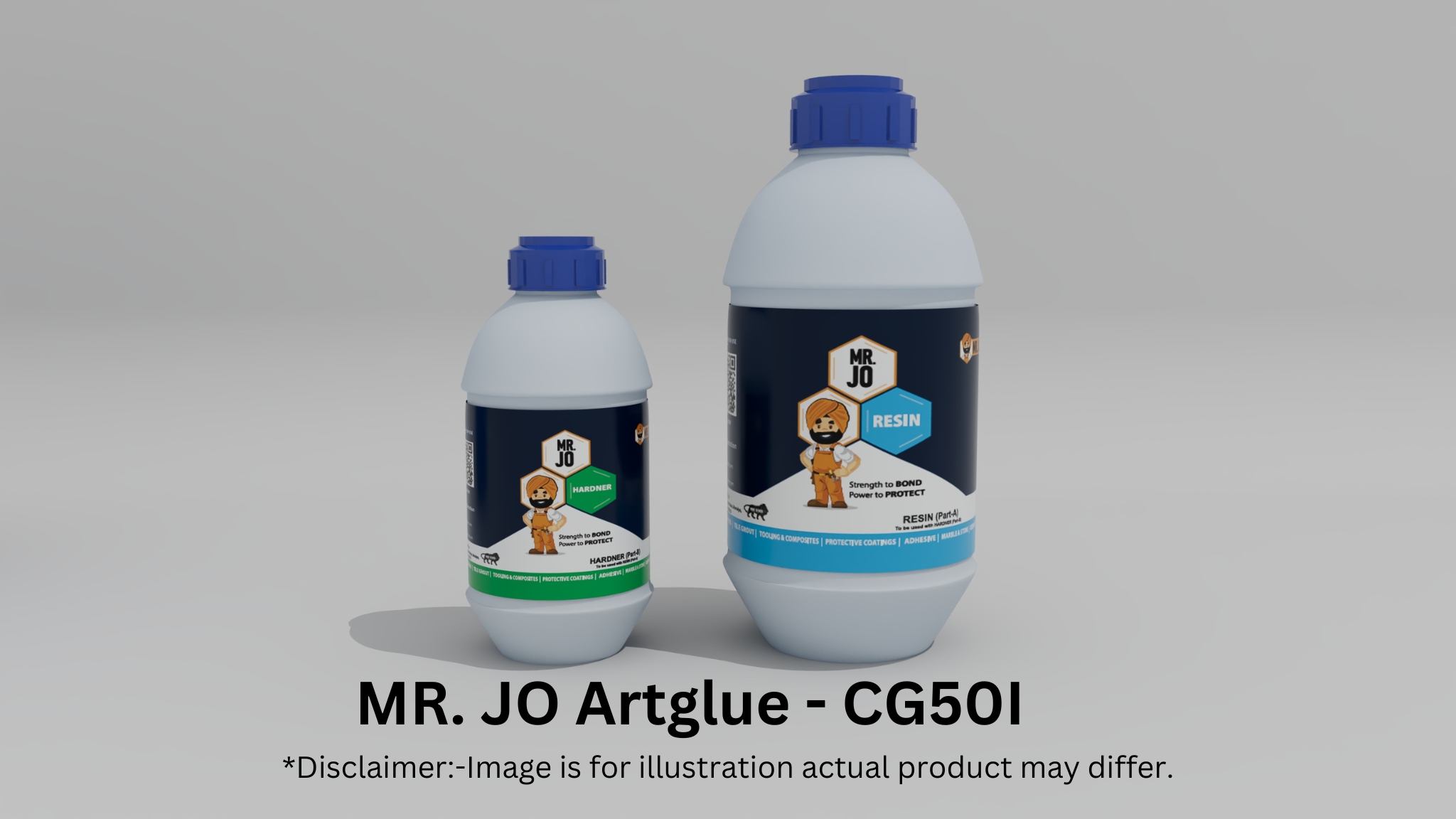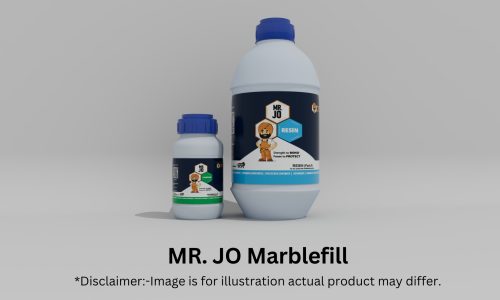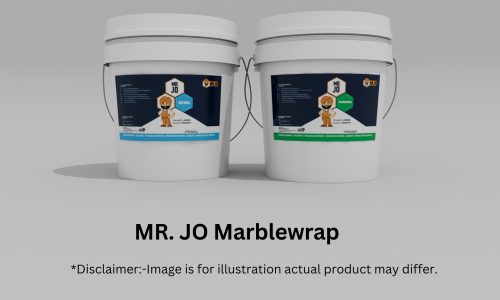MR. JO Marblevacuum
₹627.00 – ₹3,040.00 Inclusive of all taxes
Two components low viscosity 33PHR epoxy vacuum perfusion system
- Description
- Properties
- Applications
- How To Use
- Technical Data Sheet(TDS)
- FAQs
Description
MR. JO Marblevacuum is a two-part, clear epoxy system. It has low viscosity and cures slowly. Moreover, it is solvent-free, making it safe and clean to use. You can use it to strengthen marble blocks. In fact, it works best when applied with vacuum perfusion. As a result, it flows deep into the material and fills even the smallest gaps. Therefore, it gives a strong and long-lasting finish.
- Color: Clear
- Pot life @25°C: 10-13 hrs
- Mixing Ratio: 100:33 PBW
- Mixture consistency: Low viscosity liquid
- Optics: Transparent
- Block infusion
- Vacuum perfusion
- Block reinforcement
- The blocks to be reinforced shall be free of impurities such as dust, dirt, sand and oil. If there are soil layer, sandstone, or large defects on the surface of the blockage, it should be removed first. The oil can be scraped off with a solvent such as alcohol or acetone, then rinse it with a high-pressure water gun and place it under the sun to dry.
- Use Part A & Part B in ratio 100:33 pbw. Mix the two components in small batches thoroughly for at least 2minutes.
- In block perfusion epoxy, a vacuum is often used to draw the epoxy deep into the marble structure, ensuring thorough reinforcement.
- Use diversion net for reinforcement and a vacuum bagging system to create a vacuum around the block.
- Install the feeding nozzles at the suitable positions. Pour it into the epoxy and then connect the pipe inlet and epoxy-feeding nozzle.
- For the epoxy filling, open the vacuum tank and control the pressure accordingly during the epoxy filling.
- After the epoxy filling, the rubber nozzle is sealed.
- The vacuum tank is turned off after 24 hrs. Further processing can be done after 72 hours.
A1. It is a low viscosity, long pot life epoxy system designed for vacuum perfusion of marble blocks and natural stones. It strengthens fragile stones by penetrating and bonding internal microcracks, voids, and pores.
Q2. What kind of stone is this suitable for?A2.
- Marble and soft natural stones
- Onyx, sandstone, and limestone
- Granite, in certain applications where deep penetration is desired
A3. The mix ratio is 100:33 by weight (Resin: Hardener). It must be mixed thoroughly for consistent curing and flow.
Q4. Why is low viscosity important for this application?A4. Low viscosity ensures:
- Deep penetration into microcracks and porosity
- Efficient flow during vacuum perfusion
- Minimal air entrapment This results in stronger and more polished stone blocks after curing.
A5. Yes — it cures to a clear, transparent finish, ensuring no discoloration of light or patterned stones.
Q6. How does this compare to standard epoxy adhesives?A6. Unlike adhesives, MarbleVacuum is formulated with:
- Longer pot life
- Lower viscosity
- Slow-reacting system ideal for vacuum or gravity perfusion It is not intended for bonding, but for internal strengthening.
A7. Through a vacuum chamber process, where mixed resin is infused into the marble block under negative pressure. It can also be used via gravity perfusion or soaking methods.
Q8. What is the typical pot life?A8. The pot life is 60–80 minutes at 25°C, allowing ample time for mixing, degassing, and infusion operations.
Q9. Can the resin be pigmented?A9. While it is typically used clear, compatible epoxy pigments may be added in small amounts to match or enhance stone tone. Test in small area first.
Q10. How long does it take to cure?A10.
- Initial gel time: 6–10 hours (depending on ambient temperature)
- Full cure: 2–3 days at room temperature Faster cure can be achieved with controlled heat if the stone tolerates it.
A11. Yes — treated marble surfaces often show enhanced polish, color depth, and crack suppression, leading to improved value and finish quality.
Q12. How should MarbleVacuum be stored?A12. Store in original sealed containers in a cool, dry place, away from direct sunlight. Shelf life is typically 12 months if stored properly.
Q13. Can this be used for surface repair or joint filling?A13. While it's optimized for internal infusion, it can be blended with fillers for small surface crack repairs — but for this purpose, use MR. JO Tecbond-CLR, CLR20, or MR. JO Bondkot-CLR
Q14. Can it be used without vacuum setup?A14. Yes, for gravity or immersion methods, though vacuum yields the best penetration and strength enhancement.
Q15. Is it suitable for outdoor stones or UV exposure?A15. Like most clear epoxies, it may yellow under prolonged UV. For outdoor applications, use tinted systems or apply a UV-stable protective topcoat after treatment.

